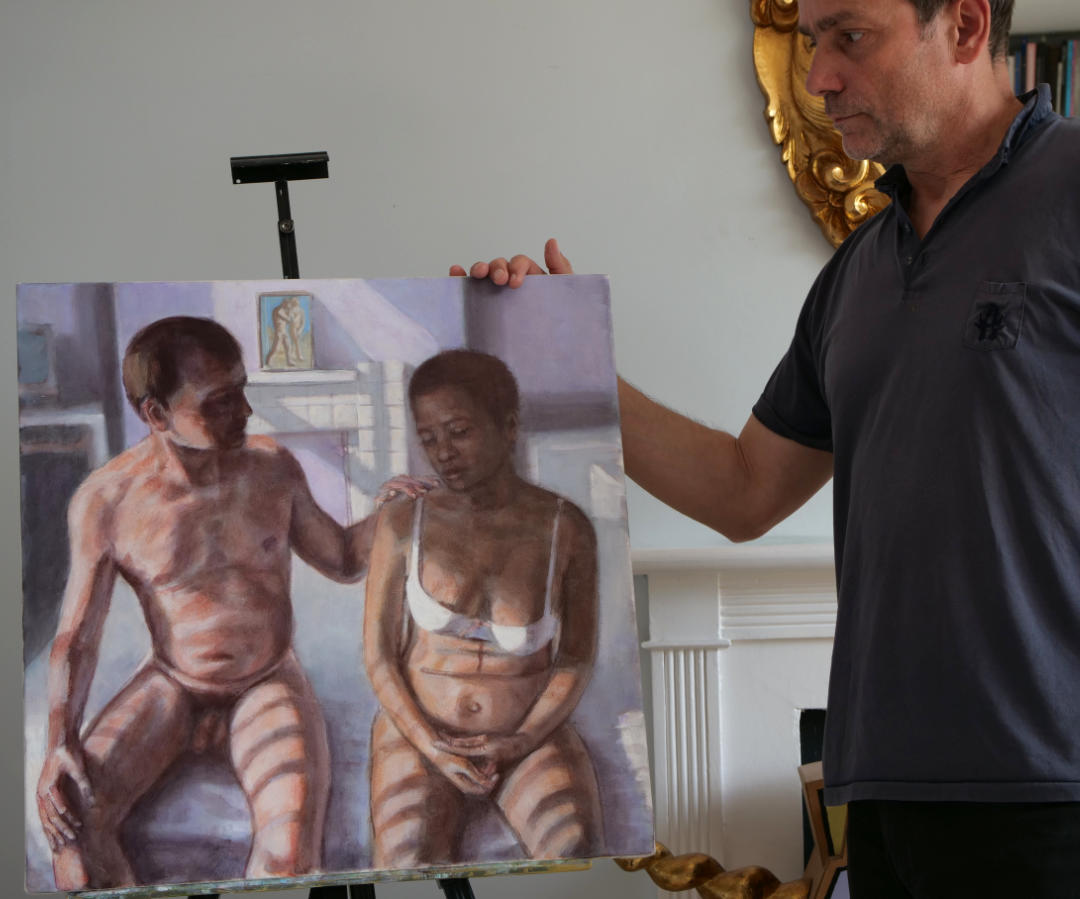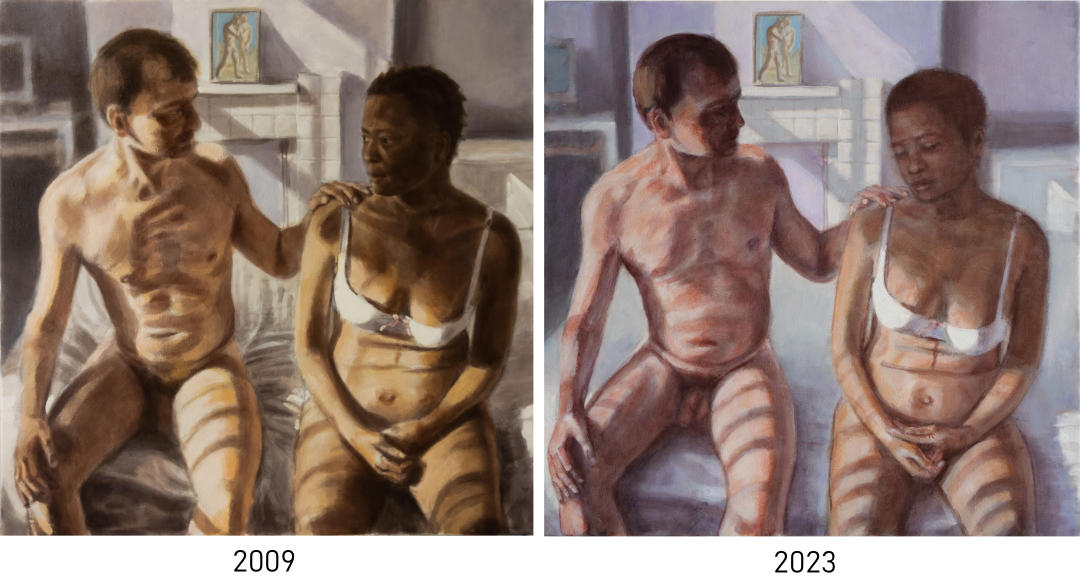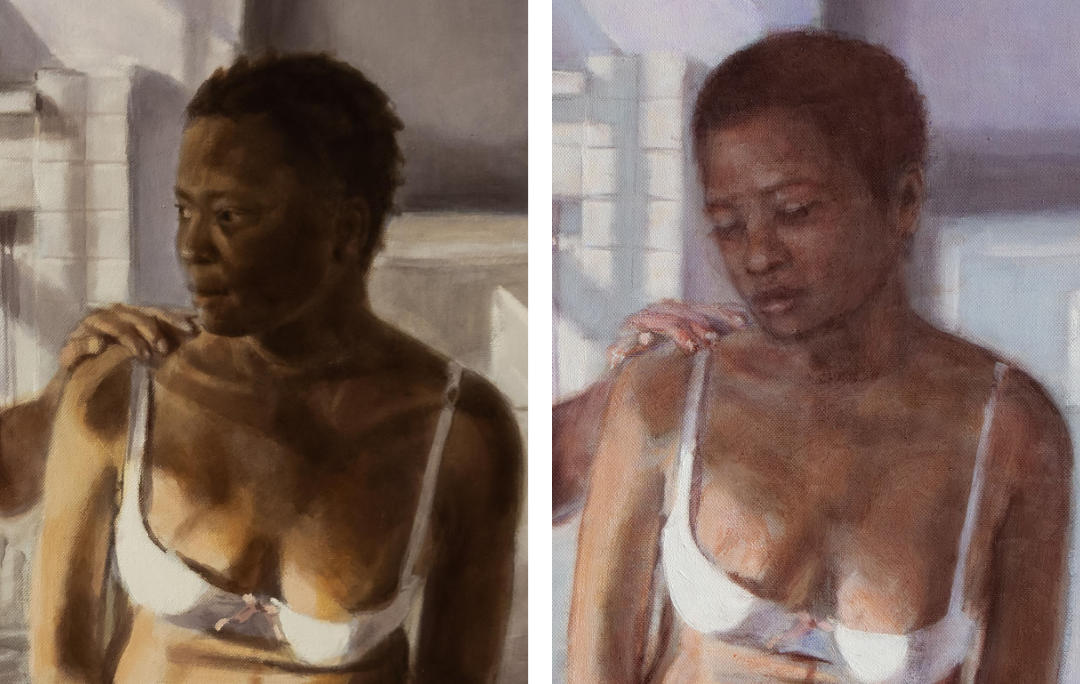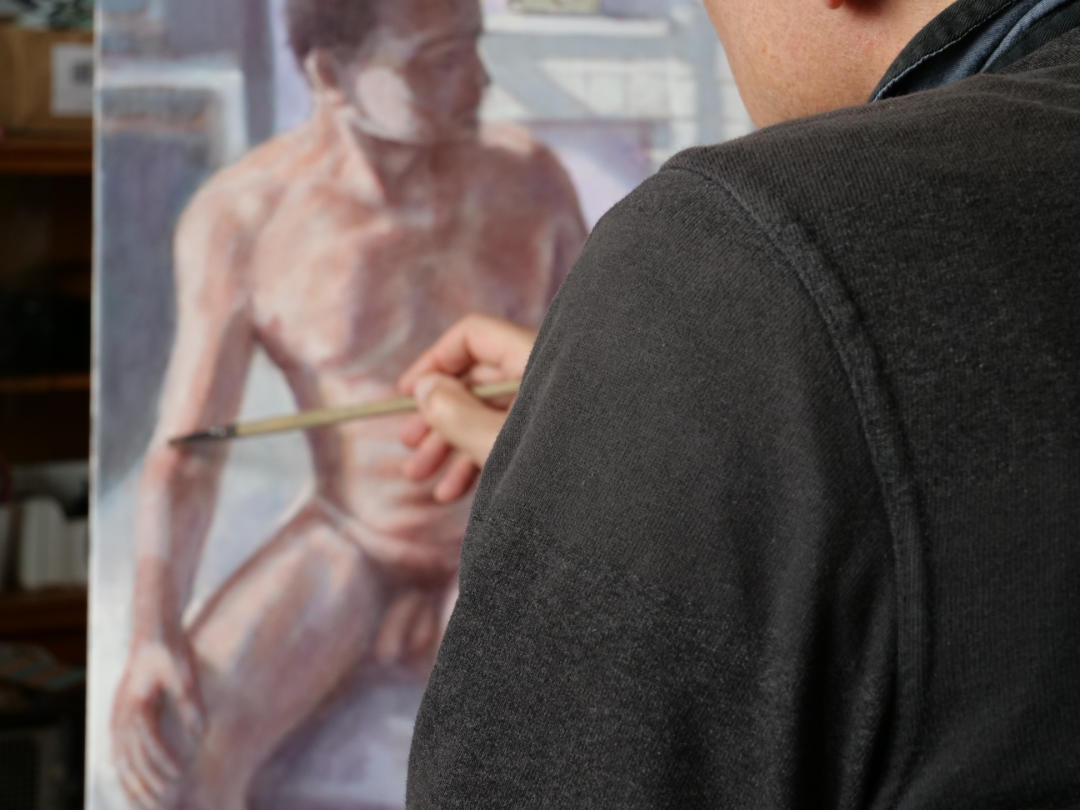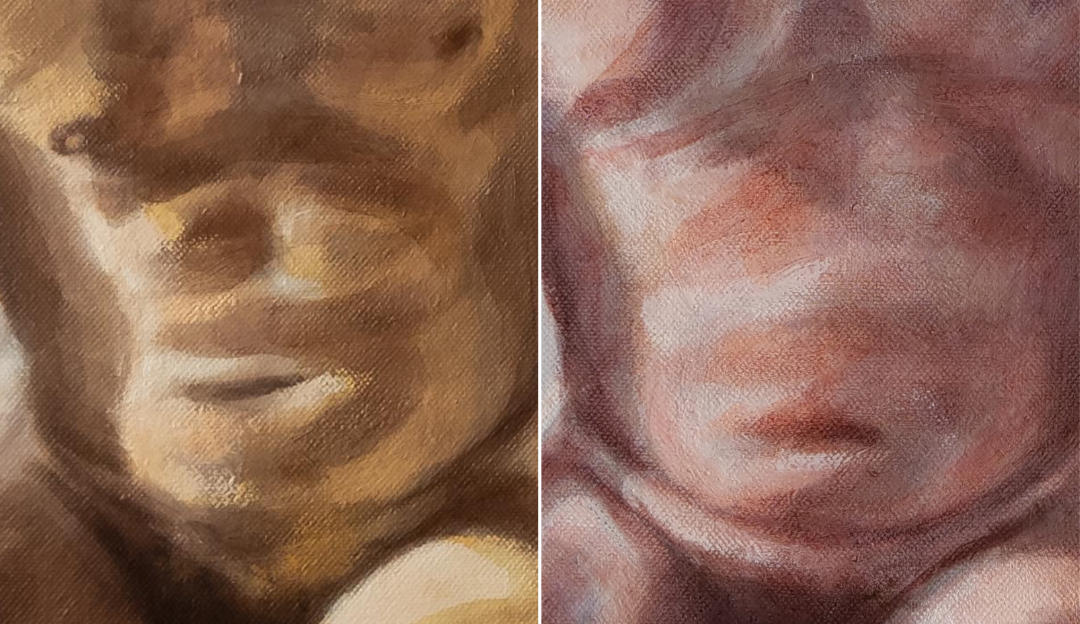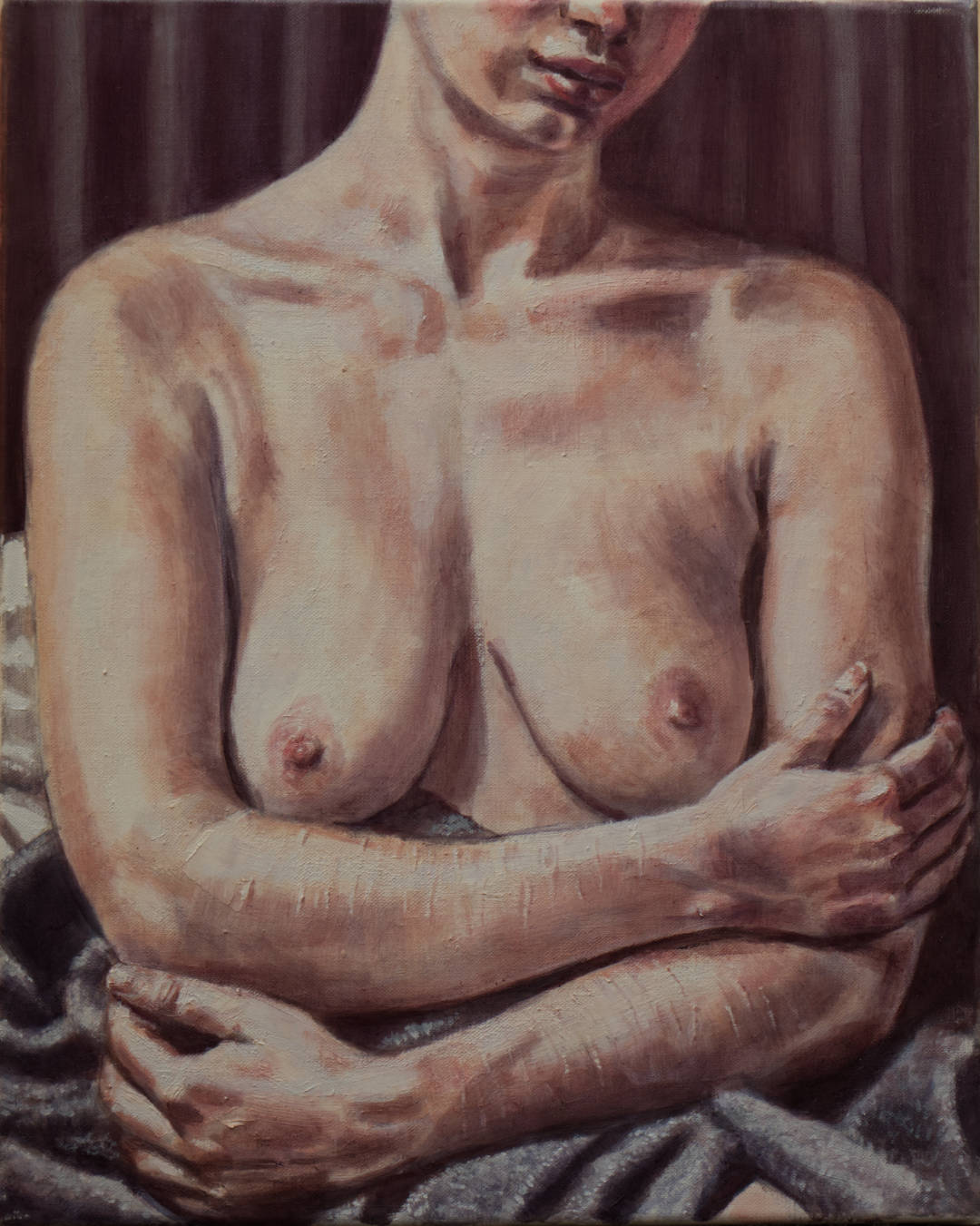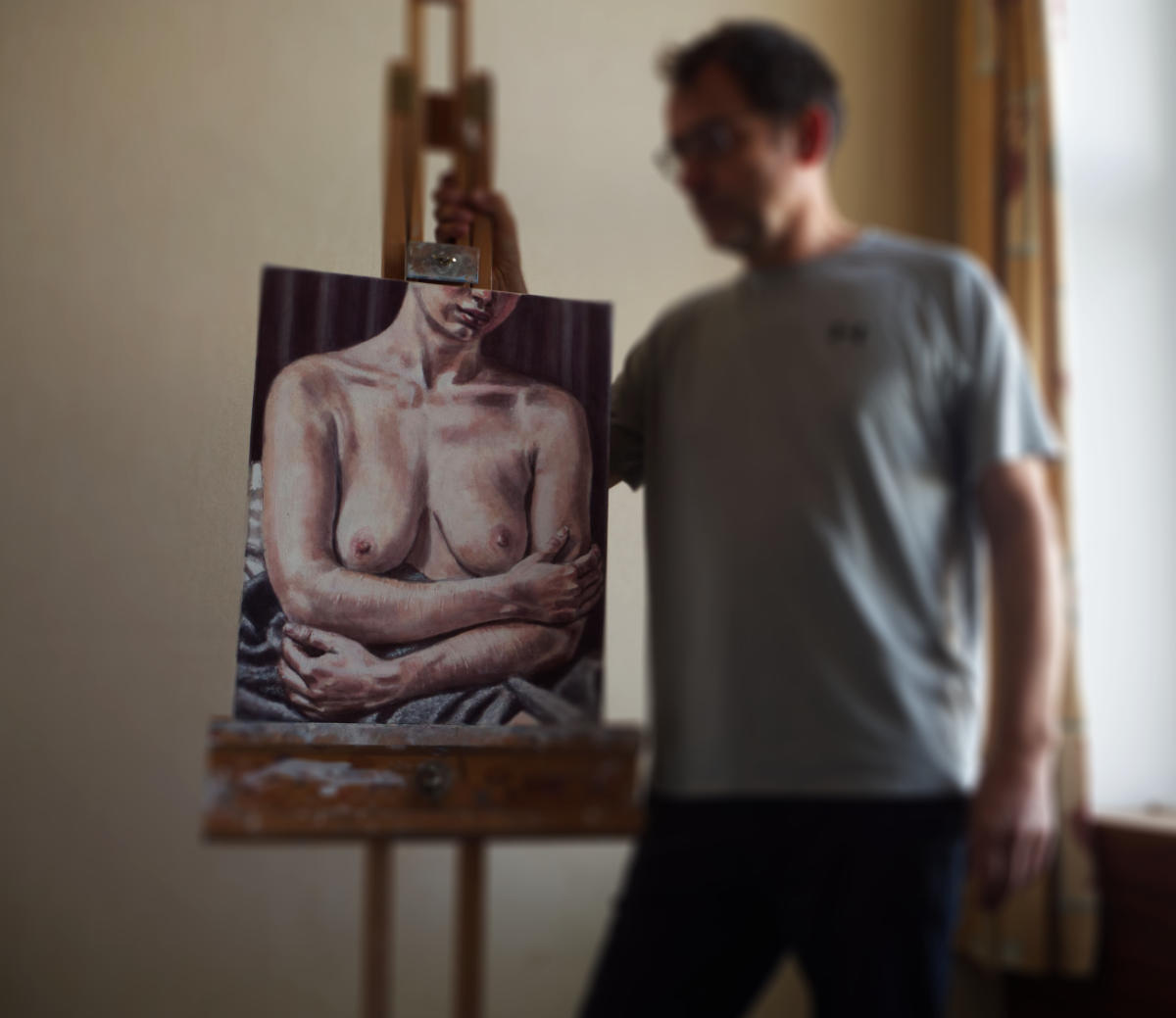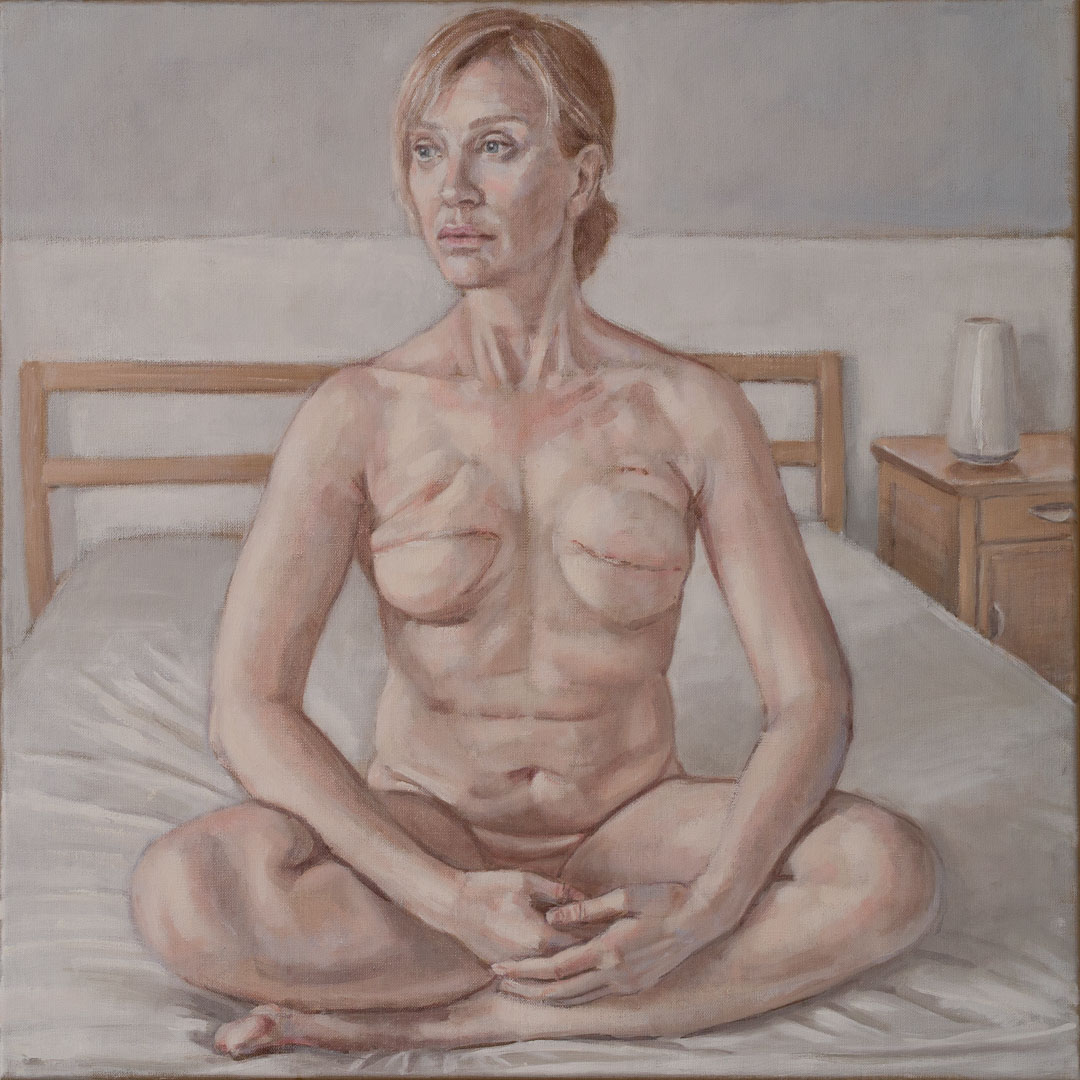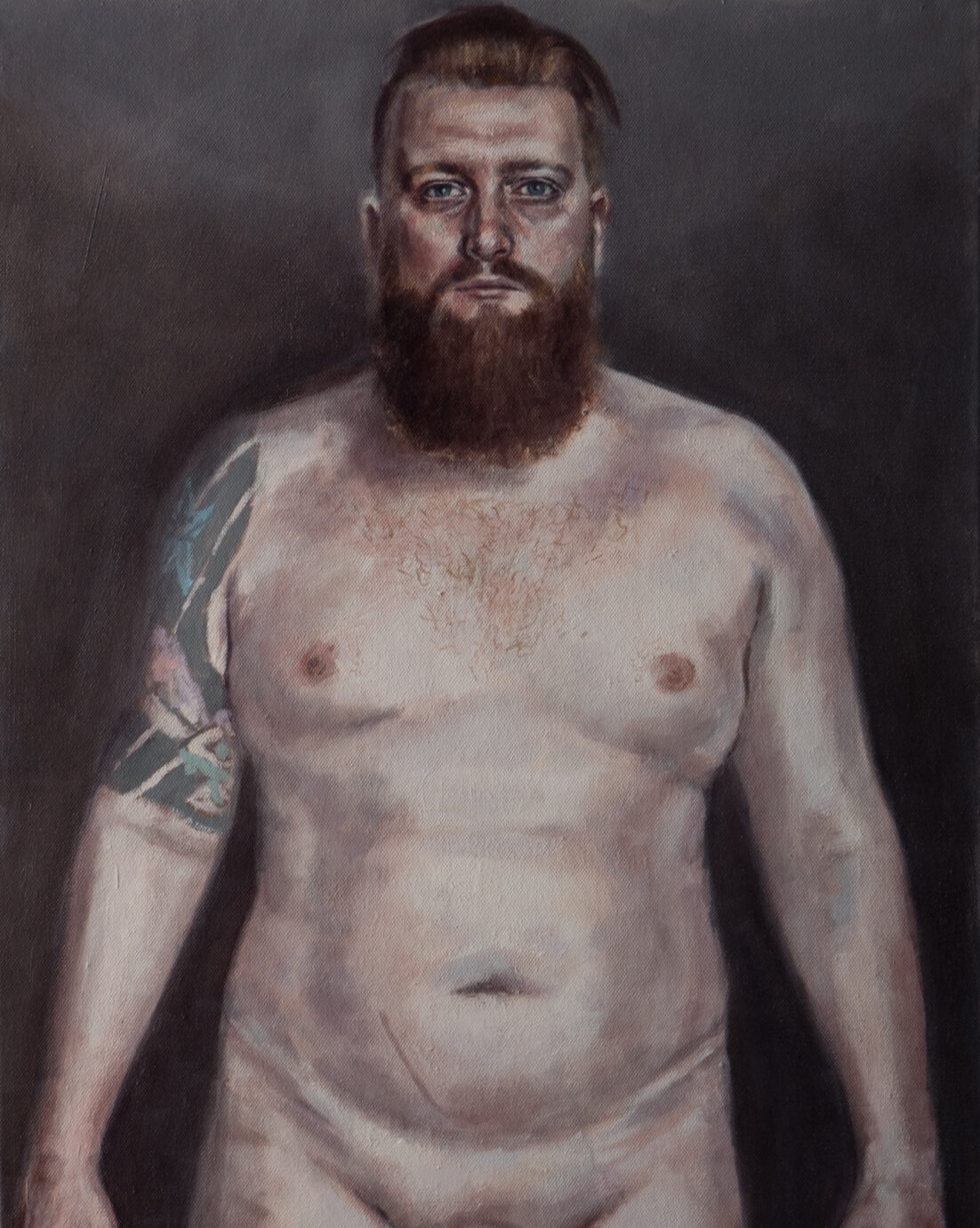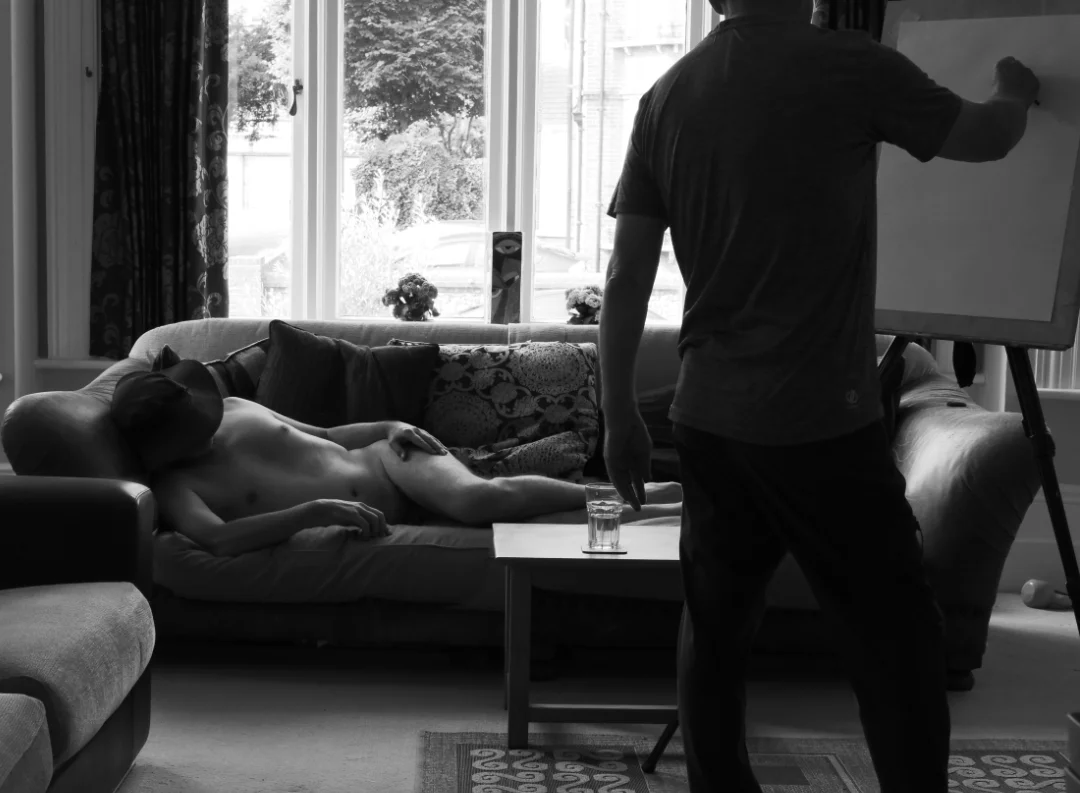
Have you ever thought about commissioning a nude portrait painting?
I am often asked if I paint nude portraits. Yes, I do. It’s really not much different from a regular portrait.
I can work from photos you provide if you prefer. Not everyone is comfortable posing nude, but I do everything I can to make models feel comfortable in my studio. If you want to provide your own photos, I can give advice about lighting and poses.
The best results would be from an in-person sitting. I do some drawings first, trying out different poses and looking for the most complementary light. Then we can choose one pose and I will take some photos of you for reference. I will use the photos and the drawings to make a painting.
I have a studio where we can do the sitting, or I can travel to you. Sometimes that’s better, because you will probably feel more comfortable posing at home.
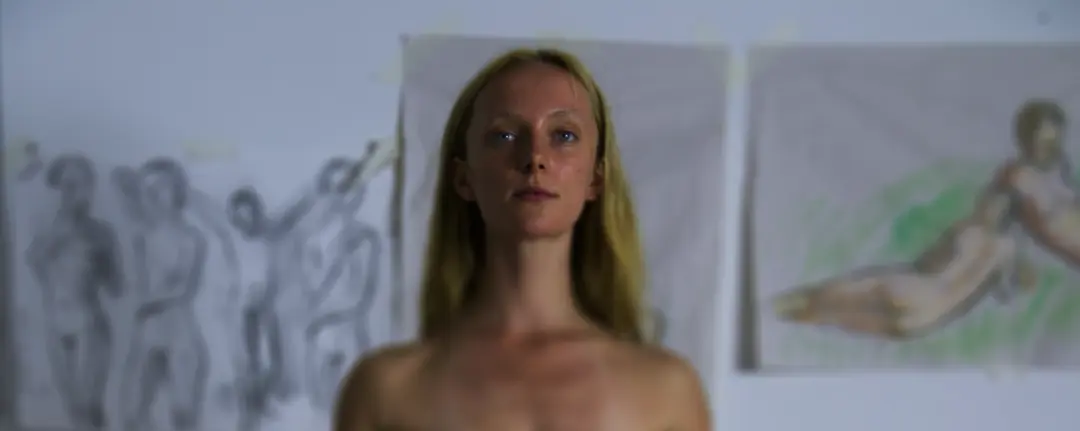
Sometimes the best poses are not planned, but can happen by accident. The body might look a certain way in a particular light; a quick look might show more of you than a pose you prepared. If we have a three hour session, we have a better chance of finding that one perfect position that expresses what you want.
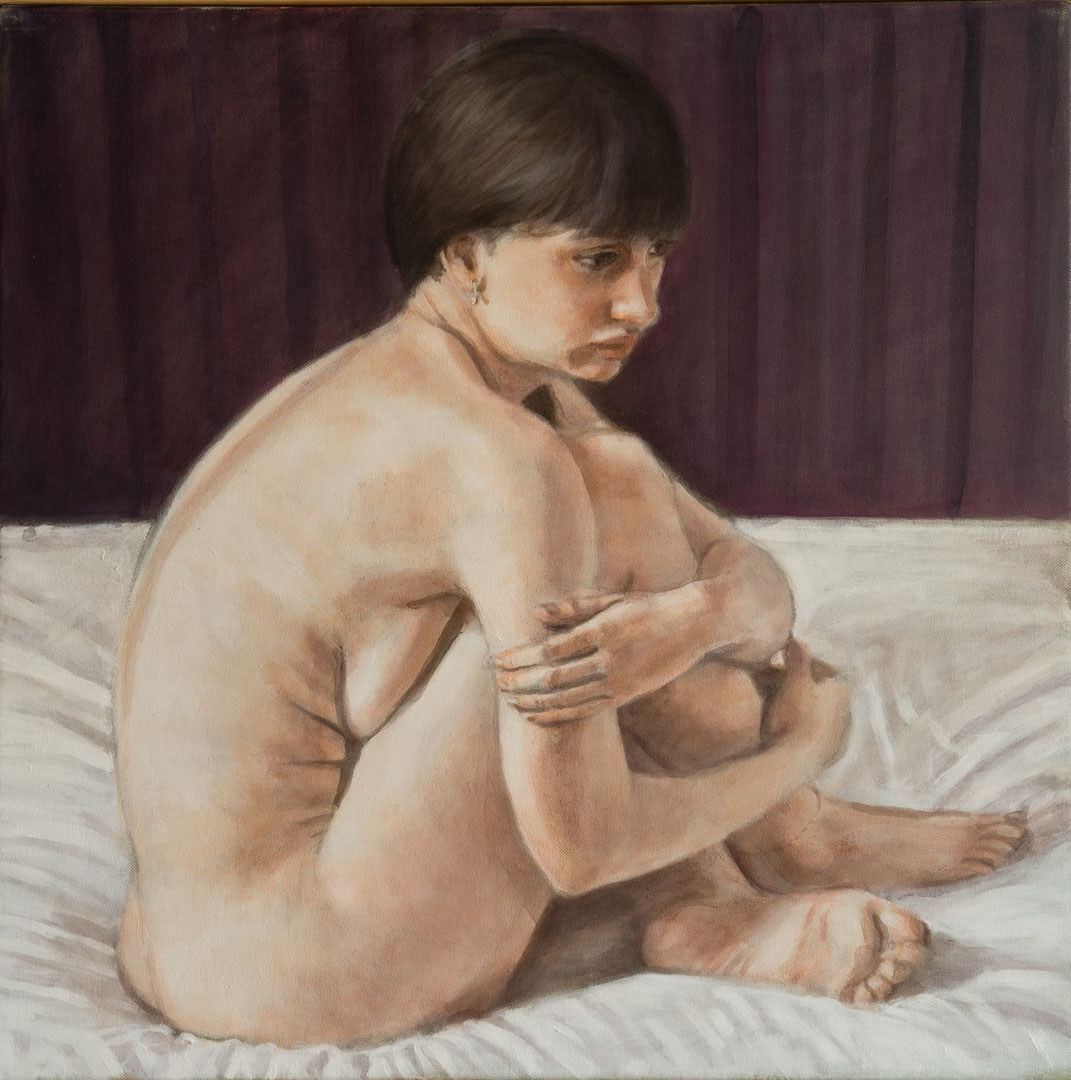
Have a look at my page How to Commission a Nude Portrait which will answer the most frequent questions. If you want more information or would like to discuss a commission then please contact me via the email address on my contact page.

